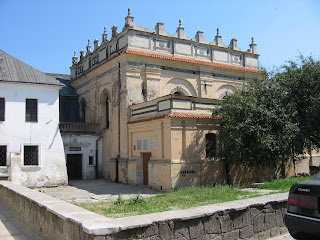In my journeys, very often I like to plan the route considering the castles or palaces I can find along the way. Some of them are hidden in old forests or placed on top of a hill mysteriously covered with fog. Others - built on islands - seem to float on the water, guarding the city nearby. All of those spectacular buildings, most of them still remembering the medieval times, are certainly worth seeing. Each of them has their own story to tell, filled with mystery, ghosts and treasures...
Mont Saint-MichelMont-Saint-Michel is is a rocky coastline island located in Normandy, France. This majestic castle is one of the first places to obtain UNESCO World Heritage listing. It is also one of the most frequently visited castles in France.
 SourceNeuschwanstein Castle
SourceNeuschwanstein CastleNeuschwanstein Castle is one of a kind in the world. It was built in 19th-century in Bavaria, situated on a rocky hill near Hohenschwangau in southwest Bavaria, Germany. You can see that the design of this castle is breathtaking: arched portals, all the arcade windows and high towers, columns and pinnacles. It looks like a fairytale castle. Rumor has it, that it has been an inspiration for Walt Disney and the famous castle in Disneyland.
 SourceMatsumoto Castle
SourceMatsumoto CastleMatsumoto Castle is one of the unique four japanese castles, which are listed as national treasures of Japan. Next to Himeji-jo, Matsumoto-jo, this was the next best existing castle donjon (a tall and sturdy defense and observation tower) in Japan. Built by Ishikawa Kazumasa and his son Yasunaga in the year 1590.
 SourceCastle of Coca
SourceCastle of CocaCastle of Coca was built in the 15th century for Archbishop Alonso de Fonseca I. It is considered as one of the best castles in Spain, definitely worth seeing. The castle's characteristic turreted structure of plaster and red brick is surrounded by a deep moat. In spite of this defensive traits, the Castle of Coca has been more of a palace than a castle.
 SourceIsola di Loreto
SourceIsola di LoretoIsola di Loreto is a neogothic castle, which has been rebuilt around 1910, being based on the fortified structure of the castle dating further back than 15th century. This castle was built on island L’isola di Loreto, the smallest island of the lake Iseo. It is located on the north side of Montisola, Italy.
 SourceThe Potala Palace
SourceThe Potala PalaceThe Potala Palace is located on the Red Hill of Lhasa, the capital city of Tibet. It was originally built in the 17th century by King Songtsen Gampo. The Potala Palace was a winter palace and the main residence of the Dalai Lamas until the 14th Dalai Lama had to escape to Dharamsala, India (he resides there until now).
 SourcePredjamski Grad
SourcePredjamski GradPredjamski Castle is a suprisingly placed renaissance castle built within a cave mouth in southwestern Slovenia, with lots of natural tunnels and smaller caves existing underneath, being a safe haven for many centuries for people living nearby. It is located approximately 11 kilometres from the famous Postojna Cave.
 SourceHunyad Castle
SourceHunyad CastleHunyad Castle was originally built as a fortress in 1212. Many believe that this castle is the place where the unfamous and terrifying Count Dracula was held as a prisoner for 7 years after he was overthrown in 1462. The castle is situated in Hunedoara, Romania.
 SourceMalbork Castle
SourceMalbork CastleThe Malbork Castle’s construction began in 1275, along the river Nogat in Poland. This castle was made from red brick and became the world’s largest brick gothic castle. It was inscribed on the UNESCO World Heritage list in 1997. Today, it is well-preserved medieval gothic castle and a museum.
 SourcePrague Castle
SourcePrague CastlePrague Castle is the Czech Capital City's premier tourist attraction. It was largest medieval castle complex in Europe and the ancient seat of Czech kings throughout the ages.
 SourceEltz Castle
SourceEltz CastleEltz Castle is a medieval castle placed in the hills above the Moselle River between Koblenz and Trier, Germany. This castle is still owned by a branch of the same family (for 33 generations!) that lived there in the 12th century.
 SourcePalacio da Pena
SourcePalacio da PenaPalacio da Pena is one of Europe’s most magnificent and uniquely designed palaces. It was built on the top of a hill above the town of Sintra, Portugal.
 SourceLöwenburg Castle
SourceLöwenburg CastleLöwenburg Castle was built around 1800 as a country residence for Count Wilhelm IX (Germany). This castle was intentionally designed to look like a medieval castle.
 SourceBodiam Castle
SourceBodiam CastleBodiam Castle is a quadrangular castle, surrounded with a huge moat, located in East Sussex, England. It was built in the late 14th century by a veteran of King Edward III’s wars with France. The purpose of this castle was to be a strategical point of defense from a possible french invasion and also - a peaceful and quiet homestead for its owner.
 Source
SourceIf you find any other castles you've seen or feel they should be mentionned here - write a comment, please! :)
Source: http://pixzii.com/









